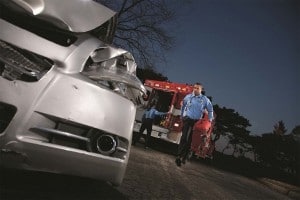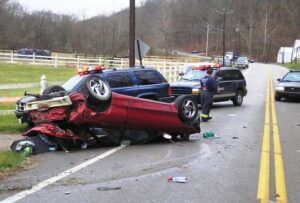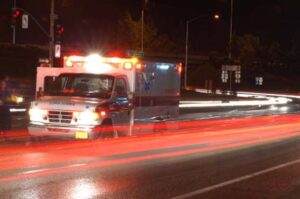
The National Safety Council predicts 390 people will die on U.S. roads during the three-day Labor Day holiday.
Despite lower traffic levels across the nation due to the COVID-19 pandemic, the coming Labor Day weekend is predicted to see as many as 390 deaths and 44,000 serious injuries on America’s highways and byways.
The National Safety Council said the estimate is consistent with previous year’s predictions. The group also notes that while the total number of traffic deaths in 2020 has fallen due to the pandemic, the death rate has risen dramatically through the first half of the year.
The rate of death on the roads was 23% higher in May 2020 compared to the same month last year, meaning more people are losing their lives for every mile driven, which is why the NSC hasn’t rounded down its fatality prediction for 2020.
(Safety advocates push for advanced tech mandate to cut hot car deaths.)
“Travel during holiday weekends always is risky, and this year our roads haven’t been safe even when traffic has been light,” said Lorraine Martin, president and CEO of the National Safety Council. “We hope drivers take these figures as a reminder to slow down, pay attention and drive like their lives depend on it, because they do.”

There were 441 deaths during the holiday weekend in 2018, the last year confirmed numbers are available.
The National Highway Traffic Safety Administration reported that 441 people died in 2018 and predicted that number would rise slightly in 2019 to 448. The final numbers haven’t been determined.
Alcohol often is a major factor in fatal crashes during holiday weekends, including Labor Day. In 2018 – the most recent year for data – 38% of fatal crashes involved an alcohol-impaired driver or motorcycle rider.
The organization offers several suggestions for helping improve safety while driving during the holiday weekend, including:
- Pick a designated driver or arrange alternate transportation if everyone will be drinkin
- Get plenty of sleep to avoid fatigue behind the wheel
- Eliminate or reduce distractions that curb your ability to drive defensively
(Driver fatality rates rise for third consecutive month.)
According to Finder.com, when you drive also determines the odds of getting into an accident. Getting behind the wheel in the late evening is nearly three times as dangerous as driving during normal commuting hours.

Traffic fatalities overall are down in 2020 due to the pandemic, but the death rate has jumped significantly.
About 37% of Labor Day’s deadly accidents happen between 6 p.m. and midnight. Another 25% happen between midnight and 6 a.m. By comparison, only 13% of the weekend’s deadly accidents happen from 6 a.m. to noon.
Of all the deadly car crashes over the long Labor Day weekend, 38% were related to alcohol from 2004 to 2018, Finder notes. Most happen in the early morning hours, with drunk driving causing 63% of deaths between midnight and 3 a.m. The three-hour period after that, 3 a.m. to 6 a.m., is the second-worst time because of drunk driving.
The NSC also points out that this is a good time to review how the advanced driver assistance systems work on your vehicle so you’re not surprised if they function – as intended – while you’re behind the wheel. For many years, brake pedals vibrated when the anti-lock brake system was activated. This frightened many drivers who immediately took their foot off the brake pedal — just the opposite of what they should do.
(High-speed crashes rise as drivers go faster due to lighter traffic due stay-at-home orders.)
They also mentioned that now is the time to get any recall actions on your vehicle resolved to ensure your vehicle is operating as expected.
